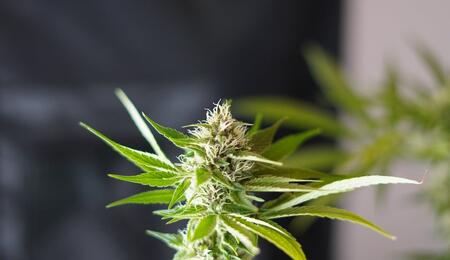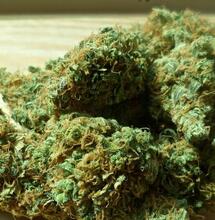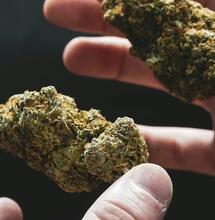Researchers Discover New Smell Compounds in Cannabis

The previously unknown compounds have been identified to give cannabis strains their unique olfactory profile. The find challenges the premise that terpenes are responsible for the distinctive aroma of different strains of weed.
A new study recently published in the journal ACS Omega, has identified “previously undiscovered cannabis compounds” responsible for giving each cannabis cultivar its authentic smell and aroma.
The research was conducted by a group of scientists from cannabis extraction and testing companies. They analyzed the volatile chemical profiles of 31 hash rosin extracts, and identified “a myriad of nonterpenoid compounds that strongly influence the unique aromatic properties of cannabis.”
While the scientists acknowledge that terpenoids contribute to the smell of marijuana, they also note that “the importance of terpenes appears to be overstated.”
Challenging Conventional Wisdom Around Terpenes
Terpenes make no more than 4 percent of the total mass of cured cannabis flower and this content certainly plays a role in determining the smell of marijuana. But the latest research suggests that there are more powerful compounds in cannabis than terpenes when it comes to defining aroma.
Smell is one of the most important properties in differentiating cannabis varieties and user preferences, the researchers note. However, terpenes in general provide “minimal information regarding the unique aromatic attributes of many cannabis varieties.”
The research group points out that even among clusters of strains with similar terpenoid content, the scents can vary greatly from one to another. What's more, the non-terpenoid compounds that they isolated were found to strongly relate with both sweet and savory odors.
“We found clear correlations between key minor compounds never before seen in cannabis that produce some of the most desirable aromas,” said in a statement TJ Martin, VP of Research and Development at the cannabis extraction company Abstrax.
“After analysis by our sensory panel in tandem with our analytical data, it became evident that terpenes, while essential in producing many of the typical aromas in cannabis, do not necessarily differentiate many varieties with distinct smells,” Martin added.
The researchers were able to identify aromatic compounds with diverse functions. One group that was isolated is tropical volatile sulfur compounds (VSCs), which have major contributions “to certain varieties with strong citrus or tropical fruit aroma.”
Another type of compounds include Indole and Skatole (3-methylinodole), highly pungent constituents in savory/chemical varieties of cannabis.
VSCs would be what gives the highly desired exotic citrus and tropical undertones in cannabis strains such as Tropicana Cookies and Tangie, the researchers note. On the other hand, savory strains like 710 Chem or GMO would owe their rich and intense odors to a compound such as Skatole.
“With the discovery of the compounds responsible for the iconic Tangie flavor and aroma, known as ‘tropicannasulfurs,’ other industries can leverage these unique compounds to create extremely unique and desirable citrus aromas,” the researchers said.
The study further identified a range of different flavorants in cannabis, including alcohols, esters and ketones that contribute to berry, strawberry, tropical, pineapple, fruity, candy and other sweet undertones. These flavorants are substantially present in exotic varieties such as Apple Fritter, Zkittlez, Gelato and Runz.
Some of the findings will definitely have an implication on re-labelling certain marijuana products. For example, Gorilla Glue, a strain very well known for its strong, diesel-like smell, has been described as tropical and citrus by the sensory panel. The chemical analysis showed that the strain has a high concentration of tropicannasulfurs, suggesting that the product was mislabeled.
“The discovery of these compounds will play a crucial role in validating cannabis’ authenticity and accurately classifying cannabis varieties in the future,” said Max Koby, CEO and Co-Founder of Abstrax. “This research is important for consumers, researchers, brands, cultivators, labs, regulators, and everyone in between,” he added.
The implication of the research may go beyond industry and labeling as well. The researchers hope that other functional applications may follow, in particular in the medical domain. An example they give is indole and skatole, two of the key savory and chemical aroma compounds discovered in the study. These two compounds have the potential to be used in treatment of cancer.
“While this research may answer many questions, it opens just as many new possibilities for this incredible plant,” said Kebin Koby, Chief Science Officer of Abstrax.
Also read on Soft Secrets:



.jpg)









